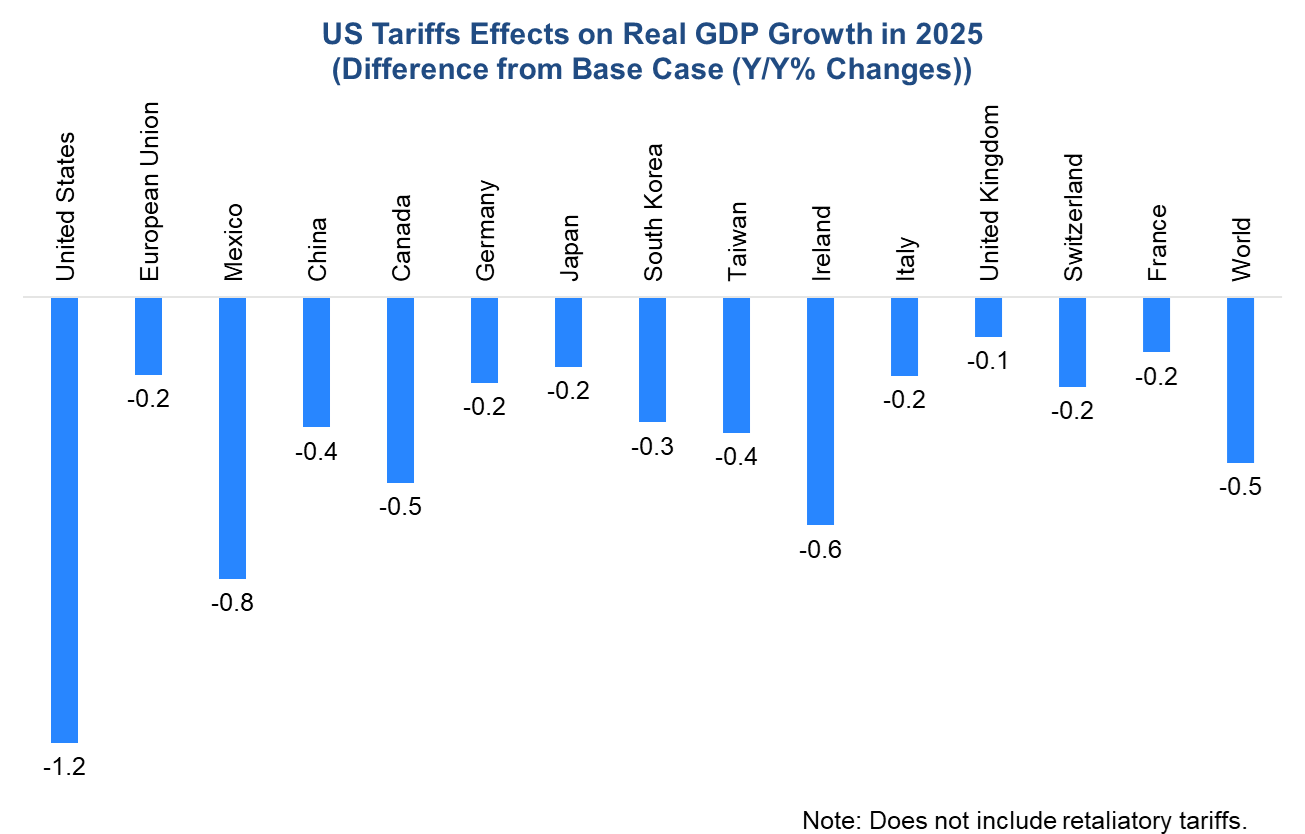
The White House announced reciprocal tariffs on April 2 against most US trading partners, issuing an executive order and invoking the International Emergency Economic Powers Act and other statutes. As a result, base tariff rates will be 20% on goods from the European Union—the largest US trading partner when taken as the full bloc of member countries—and 54% on goods from China. (For details on additional countries, please visit TCB’s Tariff Tracker.) By the numbers: Our analysis assumes these tariffs would be in place for a year and doesn’t include any reciprocal tariffs on US goods. The TCB take: The Administration has cited the great benefit of forthcoming tariff levies to the federal coffers, but our analysis shows this to be about $460 billion in 2025, and potentially not enough to mitigate economic losses. Although not inconsequential, $460 billion is a small fraction of the US’ outstanding public debt of $28.9 trillion (97% of GDP)—or the $2.2 trillion annual spend on Medicare and Medicaid. It also only represents a fraction of the $4 to $5 trillion in expected lost revenue over the next decade if the Tax Cuts and Jobs Act of 2017 (TCJA) is extended past its expiration on December 31, 2025. Implementation of these tariffs will cause weaker growth in both the US and globally, higher inflation, and disruptions to global supply chains. Source: The Conference Board estimates using the Oxford Economics model.US Growth Could be 1.2% Lower in 2025


myTCB® Members get exclusive access to webcasts, publications, data and analysis, plus discounts to events.
Robust Q3 GDP: Finding a Signal in the Noise
December 23, 2025
Fed Doves Get Nice Holiday Gift as CPI Inflation Drops
December 18, 2025
FOMC Decision: Do Three Dissents Mean a January Pause?
December 10, 2025
Fed December Decision: Not So Clear Cut
December 09, 2025
September Inflation Pause Bodes Well for Fed Cut
December 05, 2025
September Retail Sales Show Consumers Taking a Breather
November 25, 2025
Charts
The proliferation of easy-to-use generative AI requires that policymakers and business leaders each play an important role.
LEARN MORECharts
A hyperpolarized environment, diminished trust in our nation’s leaders.
LEARN MOREIN THE NEWS
Denise Dahlhoff on How CEOs Are Talking About Tariffs—without Saying “Tarif…
May 21, 2025
IN THE NEWS
Erin McLaughlin on Tariff Policy
April 07, 2025
IN THE NEWS
Erin McLaughlin on Reshoring Factors
April 05, 2025
IN THE NEWS
Erin McLaughlin on US Reshoring
April 02, 2025
IN THE NEWS
Erin McLaughlin: How policy uncertainty may exacerbate infrastructure chall…
March 19, 2025
IN THE NEWS
Erin McLaughlin discusses the latest on tariff policy
March 14, 2025
